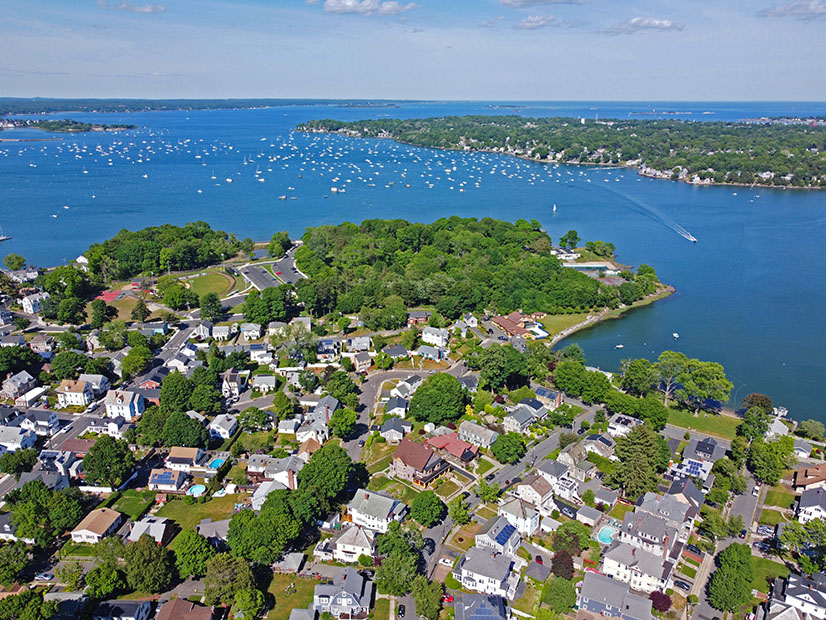
BOSTON —
The development of marshalling areas is posing a critical infrastructure challenge for the offshore wind industry, hindering state and federal clean energy goals.
As it currently stands, port marshalling area can only meet half of the potential OSW demand, according to an assessment of OSW port infrastructure and deployment methods conducted by energy policy analyst Sara Parkison, a Ph.D. candidate at the University of Delaware.
Parkison presented her findings at the American Clean Power Association’s Offshore WINDPOWER 2021 conference in Boston on Thursday, highlighting the need for “forward-looking port and vessel designs that will allow for more efficient and cost-effective deployment.”
Architectural and engineering advancements in design will be necessary to meet the Biden administration’s plans for deploying 30 GW of OSW by 2030.
But marshalling ports, or large waterside sites with the acreage and weight-carrying capacity needed to assemble, store and deploy OSW wind turbines are difficult to site. Viable land along the East Coast is often already developed as lucrative residential property, Parkison said.
A 1-GW project can use up to 54 acres of space over two years, according to the report.
Other viable areas may not have the overhead access from port to sea to transport 12-MW and 15-MW turbines or channels deep enough for the vessels that carry them out to sea. Much of the remaining undeveloped land is protected for conservation, Parkison said.
Existing marshalling ports in Europe designed for the mass deployment of OSW turbines are much larger than the collection of smaller ports in the U.S. currently designated for the same purpose. The total area of the top three European marshalling ports are three times the size of all U.S. ports.
The U.S. could build a large port like the ones in Europe with the right amount of investment, Parkison said.
“But we need to build where we can, even if it is multiple small ports,” she said.
U.S. ports will also need to develop better ways of storing the components so they use up less room, said Jay Borkland, board chair of the Business Network for Offshore Wind, in a panel discussion.
Tower sections will have to be stored closer together and blades will have to be stacked tighter in the U.S. ports than the European ports, Borkland said.
“There is also a huge need for funding specifically for port development,” he said.
The Biden administration’s 30-GW goal will spur $12 billion in capital investment in OSW annually, including up to $500 million in port upgrades.
Marshalling ports are more likely to qualify for federal funding if developers work with state departments of transportation and improve ports and the efficiency of any freight coming in and out of the area, said Travis Black, team lead of port development and intermodal planning for the Maritime Administration under the U.S. Department of Transportation.
“The executive order for tackling the climate crisis at home and abroad has really extended opportunities for the federal government to use the climate action plan so the states, regions and local governments … can look at the renewable supply chain” for funding opportunities, Black said.

